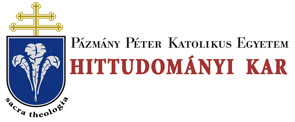Folia Theologica et Canonica 6. 28/20 (2017)
IUS CANONICUM - Szabolcs Anzelm Szuromi, O.Praem., Historical development of the aggravating and extenuating circumstances in the canonical penal law
244 SZABOLCS ANZELM SZUROMI, O.PRAEM. tified St. Ambrose, Hexaemeron (I. 8), De patriarchis (I. 6), De officiis mi- nistrorum libri trés (III. 10); St. Augustine, De coniugiis adulternis libri duo (I. 8-9. 11), Contra Faustina (XXII. 44), Epistula 47, Epistula 93, Epistula 173, Sermo 37, Questionum in Heptateuchum Libri Septem (IL 31-35; 84; IV. 15), In Evangelium loannis tractatus centum viginti quatour (V. 12), Contra duas epistolas Pelagianorum libri quatuor (I. 10-17); Pope Gregory the Great letter to St. Augustine of Canterbury (|604), which letter was commented by Venerable Bede (f735) in his famous work História Ecclesiastica Gentis Anglorum (I. 25)12, and Registrimi Gregorii (IX. 36). We must indicate here those few Roman law sources which essentially influenced the concept of the Church on unjust actions (i.e. iniuria). Among them the most significant ones are Justinian’ Digest 1.3; Digest 37.2, and Digest 48.19.13 The Dig. 48.19 is entirely dedicated to consideration of crimes and their juridical effect on the perpetrator.14 From the afore-mentioned list is quite clear that the strongest doctrinal and disciplinary basis for adjudicating the perpetrator’s action is cited the most important works of St. Augustine. Obviously, we can identify further - primary - sources, from the Early- and the High Middle Ages, moreover from the modem time. Firstly must be mentioned here St. Isidor of Seville’s (f636) essential work Etymologiarum'5 which also has got important attention in the canonical interpretation of the perpetrator of canonical penalized acts. This influence had become extraordinary important for the composition of the Decretum Gratiani, wherein we can find several quotations from him in the field of imputably. Isidor frequently used Cicero’s (f43 BC) writings to his descriptions who made also influence on the contents and technic of the Decretum Gratiani.'6 His classifi- 12 13 14 15 16 12 The best critical editori with annotated parallel Latin text and English translation is still the work of Colgrave, B. - Mynors, R. A. B. (ed.), Bede’s Ecclesiastical History of the English People, Oxford 1969. 13 Dig. 1.3.1: Krueger, P. — Mommsen, T. (ed.), Digesta lustiniani Augusti, I—II. Berolini 1868- 1870 (repr. Goldbach 200 thereafter: Mommsen) I. 11 ; Dig. 1.3.41 : Mommsen I. 14; Dig.37.2: Mommsen II. 277; Dig. 48.19.1-2: Mommsen II. 845; Dig. 48.19.5-6: Mommsen II. 846; Dig. 48.19.8-9: Mommsen II. 847-848; Dig. 48.19.27-28: Mommsen II. 851-852; Dig. 48.19.38: Mommsen II. 853-854. 14 Mommsen II. 845-854; e.g., Dig. 48.19.1: (Ulpianus) Quotiens de delicto quaeritur, piacúit non earn poenam subire quem debere, quam condicio eius admittit eo tempore, quo sententia de eo fertur, sed earn, quam sustineret, si eo tempore esset sententiam passus, cum deliquisset. Pro- inde si seruus crimen commiserit, deinde libertatém consecutus dicetur, earn penam sustinere debet, quam sustineret, si tunc sententiam passus fuisset, cum deliquisset. Per contrarium quoque si in deteriorem condicionem fuerit redactus, earn poenam subire eum oportebit, quam sustineret, si in condicione priore durasset. Generaliter placet, in legibus publicorum iudiciorum uel priuatorum criminum qui extra ordinem cognoscunt praefecti uel praesides ut eis, qui poenam pecuniariam egentes eludunt, coercitionem extraordinariam inducant. Mommsen II. 845. 15 Oroz Reta, J. - Marcos Casquero, M-A. - Diaz y Dyaz, M. C. (dir.), San Isidoro de Sevilla, Etimologias (Biblioteca de Autores Cristianos 433^434), I—IL Madrid 1993-1994. 16 Cf. Larrainzar, C., La mención de Cicerón entre las «auctoritates» canónicas, in Revista Es- panola de Derecho Canonico 71 (2014) 93-118, especially 107-109.
